Glorious And Scary Orava Castle – Realms Of Nosferatu And A Historical Landmark Of Slovakia
Jan Bartek – AncientPages.com - Glorious and scary Orava Castle is often associated with the realms of Nosferatu today, but the history of this ancient building goes much further in time.
Orava Castle. Credit - Wojsyl, CC BY-SA 3.0
In 1922, when the horror movie Nosferatu was shot, it was decided to use the castle as the residence of the legendary vampire. It was a good choice because Orva Castle has all the spooky elements required in a scary vampire movie.
Nicknamed the "Dracula Castle," the magnificent ancient castle is situated on a high rock above the Orava River in Oravský Podzámok, Slovakia, a territory as early as the Primeval Age.
Orava Castle Is Much More Than The Home Of Nosferatu
Many people see little or no distinction between Czechs and Slovaks, which is perfectly understandable because it wasn't so long ago that we used the name Czechoslovakia. People of both countries lived together in a single state.
Still, though these two countries have many cultural similarities, there are also several significant differences.
With its scary atmosphere and mysterious underground passages, the Orava Castle attracts many tourists who want to enjoy and admire this tremendous historical landmark of Slovakia.
Some people who visit the Orava Castle ask if this place was the home of the horrifying, bloodthirsty vampire, but after learning the truth, they tend to be a little disappointed.
The surrounding atmosphere makes the Orava Castle look remarkable. Image credit: Orava Castle Museum
To begin with, one must remember Nosferatu was only a movie character.
Count Dracula existed and was often cruel, but he wasn't a vampire. His real name was Vlad III, but he was often called Dracula, and he was a Prince in Wallachia, a part of present-day southern Romania, who lived between 1431 and 1476.
Vlad used severe methods to restore order in a lawless state. He also dared to drive the occupation force, the Ottomans, out of the country. But Vlad had a dark side, too.
Regarded today as a national hero, Vlad III most likely inspired the Irish author Bram Stoker, who "borrowed Vlad's name for his Transylvanian count in the book "Dracula" from 1897. We have to remember that 'Dracula' is literally translated in Gaelic as Drac Ullah, which means 'bad blood.'" 1
Its old age is visible. Image credit: Orava Castle Museum
Orava Castle Was Almost Erased From Ancient History Pages
The ancient past of the Orava Castle is also fascinating, especially since the beautiful building was almost erased from the history pages.
After the Tartar invasion in 1241, people started to build the castle on an old wooden fortification site. It took several centuries, but the castle grew in size in time thanks to several owners who reconstructed it.
The original design of 'Dracula Castle' was in Romanesque and Gothic style, but later it was reconstructed as a Renaissance and Neo-Gothic structure. In the mid-16th century, the Thurzo House, a Hungarian noble family, invested in the Orava Castle and turned it into a magnificent building, but its present form was not finalized until 1611.
After the death of the last descendant of the Thurzo family, the castle had several owners, but they didn't bother to invest in the maintenance of the building. Then, in 1800, a tragic fire destroyed the Orava Castle, and its owners could no longer use it as a residence.
Entering through this door gives you the impression you're visiting a different world. Image credit: Orava Castle Museum
When World War I and II broke out, it was evident that no one had time to think about this ancient castle. At this point, it seemed Orva Castle was not meant to be, but fortunately, restoration work started again after WW II and the castle became a national monument. Orva Castle survived against all odds.
With its 154 rooms, 754 stairs, palaces, towers, and underground passages, it's difficult to say what part of the Orava Castle is most interesting. The beautiful Chapel of St. Michael and the Knights' Room are attractive places to explore among visitors.
To many, this will always be Dracula's Castle. Still, putting fascination with Nosferatu and blood-sucking vampires aside, we should never forget that Orava Castle commemorates many historical events and movements that had a decisive impact on the fate of Slovakia.
Written by Jan Bartek - AncientPages.com Staff Writer
Updated on Nov 21, 2023
Copyright © AncientPages.com All rights reserved. This material may not be published, broadcast, rewritten or redistributed in whole or part without the express written permission of AncientPages.com
Expand for referencesJ. Podolak. "The Development of Ethnography in Slovakia." Midwest Folklore 8, no. 2 (1958): 69-84. Accessed January 24, 2020.
More From Ancient Pages
-
 Surprising Connection Between Norse God Odin And Attila The Hun Revealed
Featured Stories | Dec 8, 2020
Surprising Connection Between Norse God Odin And Attila The Hun Revealed
Featured Stories | Dec 8, 2020 -
 Did An Ancient Supernova Force Humans To Walk Upright?
Human Beginnings | Oct 24, 2019
Did An Ancient Supernova Force Humans To Walk Upright?
Human Beginnings | Oct 24, 2019 -
 Mystery Of King Solomon’s Temple
Biblical Mysteries | Dec 3, 2018
Mystery Of King Solomon’s Temple
Biblical Mysteries | Dec 3, 2018 -
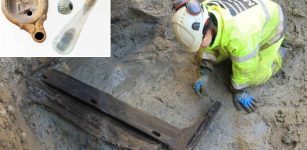 First Complete Roman Funerary Bed Found In Britain
Archaeology | Feb 19, 2024
First Complete Roman Funerary Bed Found In Britain
Archaeology | Feb 19, 2024 -
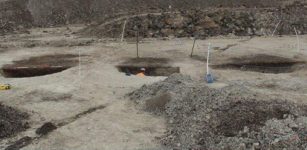 Significant Mesolithic Site With Unusual Pits Discovered In Bedfordshire
Archaeology | Jul 3, 2023
Significant Mesolithic Site With Unusual Pits Discovered In Bedfordshire
Archaeology | Jul 3, 2023 -
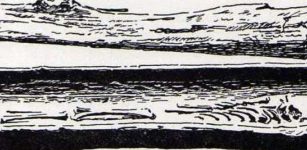 Ancient Burial Of A Princess Who Fell Off A Cliff Raises Many Questions
Archaeology | Apr 18, 2019
Ancient Burial Of A Princess Who Fell Off A Cliff Raises Many Questions
Archaeology | Apr 18, 2019 -
 Alexander The Great’s Mysterious And Unexplained Encounter In Babylon
Ancient Mysteries | Jul 15, 2021
Alexander The Great’s Mysterious And Unexplained Encounter In Babylon
Ancient Mysteries | Jul 15, 2021 -
 The Oldest Denisovan Fossils Ever Discovered Shed New Light On Early Hominins As They Spread Across Eurasia
Archaeology | Nov 30, 2021
The Oldest Denisovan Fossils Ever Discovered Shed New Light On Early Hominins As They Spread Across Eurasia
Archaeology | Nov 30, 2021 -
 First Known Depiction Of The Biblical Heroines Deborah And Jael Unearthed On 1,600-Year-Old Mosaics
Archaeology | Jul 6, 2022
First Known Depiction Of The Biblical Heroines Deborah And Jael Unearthed On 1,600-Year-Old Mosaics
Archaeology | Jul 6, 2022 -
 Knights Templar’s Legendary Sword In Stone In Terminillo Mysteriously Disappeared – Where Is It Hidden?
Featured Stories | May 3, 2021
Knights Templar’s Legendary Sword In Stone In Terminillo Mysteriously Disappeared – Where Is It Hidden?
Featured Stories | May 3, 2021 -
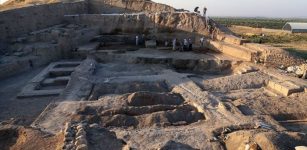 Excavations At Oylum Höyük In Southeast Anatolia Near Syrian Border – Resumed
Archaeology | Jul 26, 2020
Excavations At Oylum Höyük In Southeast Anatolia Near Syrian Border – Resumed
Archaeology | Jul 26, 2020 -
 Ancient Humans: Clarifying The Co-Existence Between Modern Humans And Neanderthals
Archaeology | Oct 13, 2022
Ancient Humans: Clarifying The Co-Existence Between Modern Humans And Neanderthals
Archaeology | Oct 13, 2022 -
 Unique Structure ‘Wooden Version Of Stonehenge’ – Identified In The Perdigões Complex, Portugal
Archaeology | Aug 6, 2020
Unique Structure ‘Wooden Version Of Stonehenge’ – Identified In The Perdigões Complex, Portugal
Archaeology | Aug 6, 2020 -
 Neanderthals’ Lack Of Drawing Ability Could Explain Why Modern Humans Became Smarter
Archaeology | Feb 11, 2018
Neanderthals’ Lack Of Drawing Ability Could Explain Why Modern Humans Became Smarter
Archaeology | Feb 11, 2018 -
 Mysterious Tiahuanaco Empire Established By The Sons Of The Sun – An Unknown Chapter Of Prehistory
Ancient Mysteries | Oct 30, 2018
Mysterious Tiahuanaco Empire Established By The Sons Of The Sun – An Unknown Chapter Of Prehistory
Ancient Mysteries | Oct 30, 2018 -
 Huge Ptolemaic/Roman Funerary Structure Unearthed In Egypt’s Fayoum
Archaeology | Dec 6, 2022
Huge Ptolemaic/Roman Funerary Structure Unearthed In Egypt’s Fayoum
Archaeology | Dec 6, 2022 -
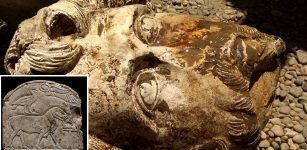 Ancient Shrine Of God Osiris-Ptah Neb And Rare Bust Of Emperor Marcus Aurelius Discovered In Egypt
Archaeology | Apr 28, 2018
Ancient Shrine Of God Osiris-Ptah Neb And Rare Bust Of Emperor Marcus Aurelius Discovered In Egypt
Archaeology | Apr 28, 2018 -
 Your Neanderthal Genes May Prevent You From Metabolizing Drugs Efficiently
Archaeology | Jul 25, 2022
Your Neanderthal Genes May Prevent You From Metabolizing Drugs Efficiently
Archaeology | Jul 25, 2022 -
 Riddle Of Mystery Hill: Who Built America’s Stonehenge?
Featured Stories | May 10, 2020
Riddle Of Mystery Hill: Who Built America’s Stonehenge?
Featured Stories | May 10, 2020 -
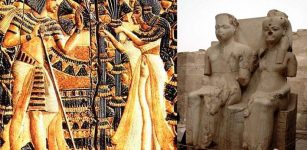 Ankhesenamun – Mysterious Death Of Tutankhamun’s Wife Ended The True Amarna Bloodline
Featured Stories | Mar 23, 2018
Ankhesenamun – Mysterious Death Of Tutankhamun’s Wife Ended The True Amarna Bloodline
Featured Stories | Mar 23, 2018





